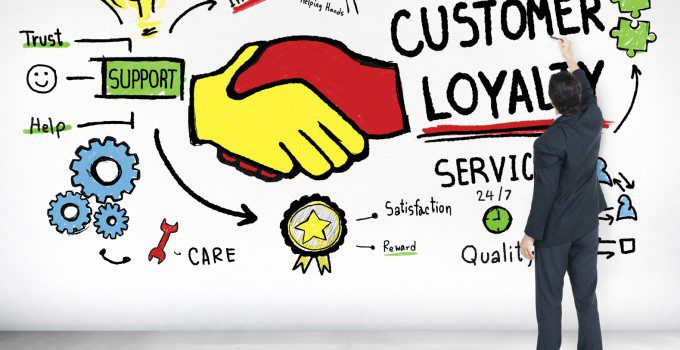A common misconception about customer loyalty states that, as long as the customer is satisfied, it is guaranteed that they will return in the future. This is not the case. Because it is much easier to maintain relationships among existing customers than it is to build relationships with new customers, it is important to take effective measures to make sure your customers stick around. Take a look at these 5 keys to unlock customer loyalty.
- Shared Views – The organization or independent customer you are doing business with should have a similar vision of success, similar business practices, and similar expectations as you for the outcome of the collaboration. The more your organization fits with your customer, the more loyal they will be. To achieve this fit, think about other customers that work well with your organization. Are there any common characteristics among the customers you work best with? Once you have an idea of which characteristics encourage compatibility between your organization and your customers, make sure you emphasize those characteristics when dealing with your customers.
- Shared Economic Value – In the end, it all comes down to spending and saving money. Does your organization help customers reduce or avoid expenses? Does it help them increase revenue and profit? Your organization should be able to financially help your customers. Communicate with your customers in order to know how your solutions help or hinder them. The customers will appreciate that you are showing interest in how their experience went, and you’ll know which methods and products are best for each customer.
- Emotional Bond – Ritz-Carlton hotels have a useful habit of creating strong emotional bonds among their valued customers. They make an effort to remember their customers’ preferences and go to extreme lengths to cater to those preferences. In order to create an emotional bond with your customers, make an effort to know their preferences. Towel placement and number of complimentary pillow chocolates may not be relevant, but an understanding of their preferred form of communication and any specifics that relate to your product would be useful to know and implement in advance.
- Performance – Satisfaction can easily be mistaken for performance. However, performance has more objective criteria when measuring its effectiveness compared to satisfaction, which is more emotionally influenced. Is your product effective, approved, and not prone to mistakes? Once you’ve established your selling performance factors, consider which ones truly matter to your customers. If you created that emotional bond we mentioned, you should know which customers value your on-time delivery rate, for example.
- Satisfaction – It may not be the only one, but it still is an extremely important factor. A customer’s satisfaction level is not set in stone. To reiterate, satisfaction is less objective and more based on the customer’s experience and mood during collaboration. The best way to optimize satisfaction is to exceed expectations. Learn enough about your customer to know what they expect in terms of price and level of service and communication, and exceed those expectations.
Keeping your returning customers happy and turning new customers into returning customers can be a long and difficult process. Keep these key points in mind when you collaborate with your customers to optimize your organization’s chance for high customer loyalty.




